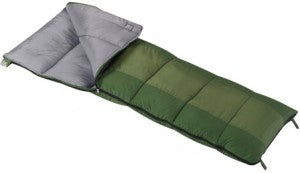Hey, Summer Enthusiasts!
It’s always a burst of excitement and wide smiles when your campers return home. You’ll want to brace yourself for the next few days for the flood of camp stories your kid has. Whether you want to or not, you’re going to hear all about their new camp friends and crazy adventures that may or may not be exaggerated.
For today’s blog post, I want to give you some tips to help you and your kid upon their homecoming after summer camp ends. The best advice I have for you is that the best time to plan for the next year’s summer camp season is right now.
A great way to start getting ready for summer camp next year is to go over your kid’s packing list. First of all, did your kid bring everything home that was brought to camp? If anything is missing, it’s smart to contact your kid’s summer camp to see if they might have any of the missing items.
Next, you can go through the camp clothing your kid has. Often times, you can keep the clothes for next year’s summer camp stay. If your kid will soon outgrow their clothes for camp or you no longer want the clothes for whatever reason, you can donate them, use them as a hand-me-down to a younger sibling, or throw them away (if they’re  ruined).
ruined).
After the clothing, you’ll want to see if any gear is broken whether it’s a flashlight, fan, or any other breakable product.
In doing so, you’ve discovered all the items that will need to be replaced for next year. Why wait for next spring to go through stressful shopping? Buy your summer camp gear now and get great season-ending sales on quality products!
 It’s smart to talk to your kids about summer camp promptly after their return home when the memories of camp are still fresh on their minds. Ask them about what gear worked and what didn’t. Was the sleeping bag
It’s smart to talk to your kids about summer camp promptly after their return home when the memories of camp are still fresh on their minds. Ask them about what gear worked and what didn’t. Was the sleeping bag  warm enough or maybe too warm? Maybe the backpack wasn’t big enough.
warm enough or maybe too warm? Maybe the backpack wasn’t big enough.
Unpacking gear can also be split into two groups—one to store away until next year, and the other to use up now. You’ll want to use  up any liquid toiletries like sunblock and bug repellent this summer. Those products will lose their effectiveness by next year.
up any liquid toiletries like sunblock and bug repellent this summer. Those products will lose their effectiveness by next year.
It’s wise to go over the second group of products that’s to be stored away to remove the batteries of any battery-operated items. You’ ll want to watch where you store your camp trunk or duffel for the remainder of the year as well. If you’re storing your footlocker in a garage or basement, you’ll want to make sure it’s off the ground. Cold concrete floors can sl
ll want to watch where you store your camp trunk or duffel for the remainder of the year as well. If you’re storing your footlocker in a garage or basement, you’ll want to make sure it’s off the ground. Cold concrete floors can sl owly deteriorate the metal of a trunk over time.
owly deteriorate the metal of a trunk over time.
You may want to store it with a Moso Air Purifying Bag to secure it from funky smells due to moisture or mildew.
Lastly, I just have a friendly reminder not to forget about developing the pictures from your disposable camera if your kid brought one to camp (though I doubt your child will let you forget)! As always thanks for reading!
- John
 r camp along with a friend. What may sound like an incredibly helpful idea may not be as wise as it seems.
r camp along with a friend. What may sound like an incredibly helpful idea may not be as wise as it seems.



 It’s smart to talk to your kids about summer camp promptly after their return home when the memories of camp are still fresh on their minds. Ask them about what gear worked and what didn’t. Was the sleeping bag
It’s smart to talk to your kids about summer camp promptly after their return home when the memories of camp are still fresh on their minds. Ask them about what gear worked and what didn’t. Was the sleeping bag  warm enough or maybe too warm? Maybe the backpack wasn’t big enough.
warm enough or maybe too warm? Maybe the backpack wasn’t big enough. up any liquid toiletries like
up any liquid toiletries like  ll want to watch where you store your camp trunk or duffel for the remainder of the year as well. If you’re storing your
ll want to watch where you store your camp trunk or duffel for the remainder of the year as well. If you’re storing your  owly deteriorate the metal of a trunk over time.
owly deteriorate the metal of a trunk over time.
